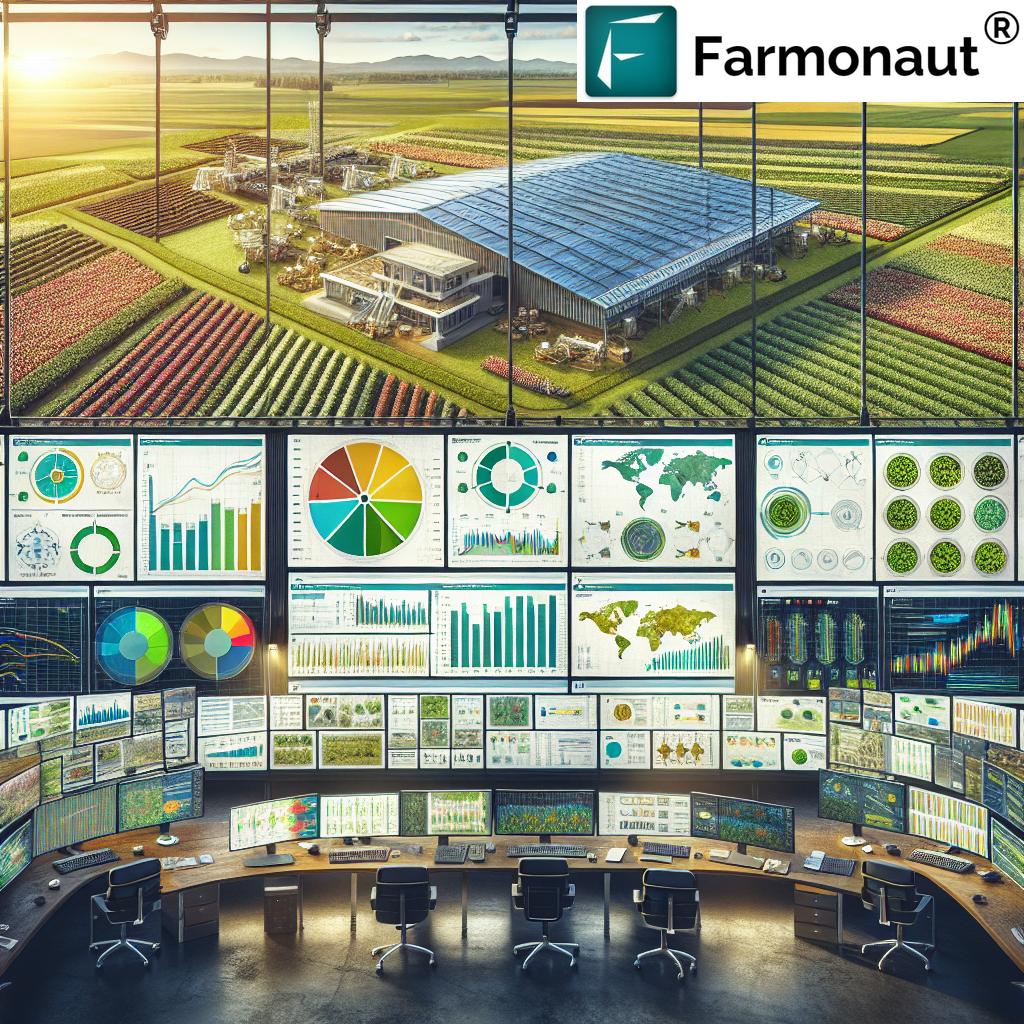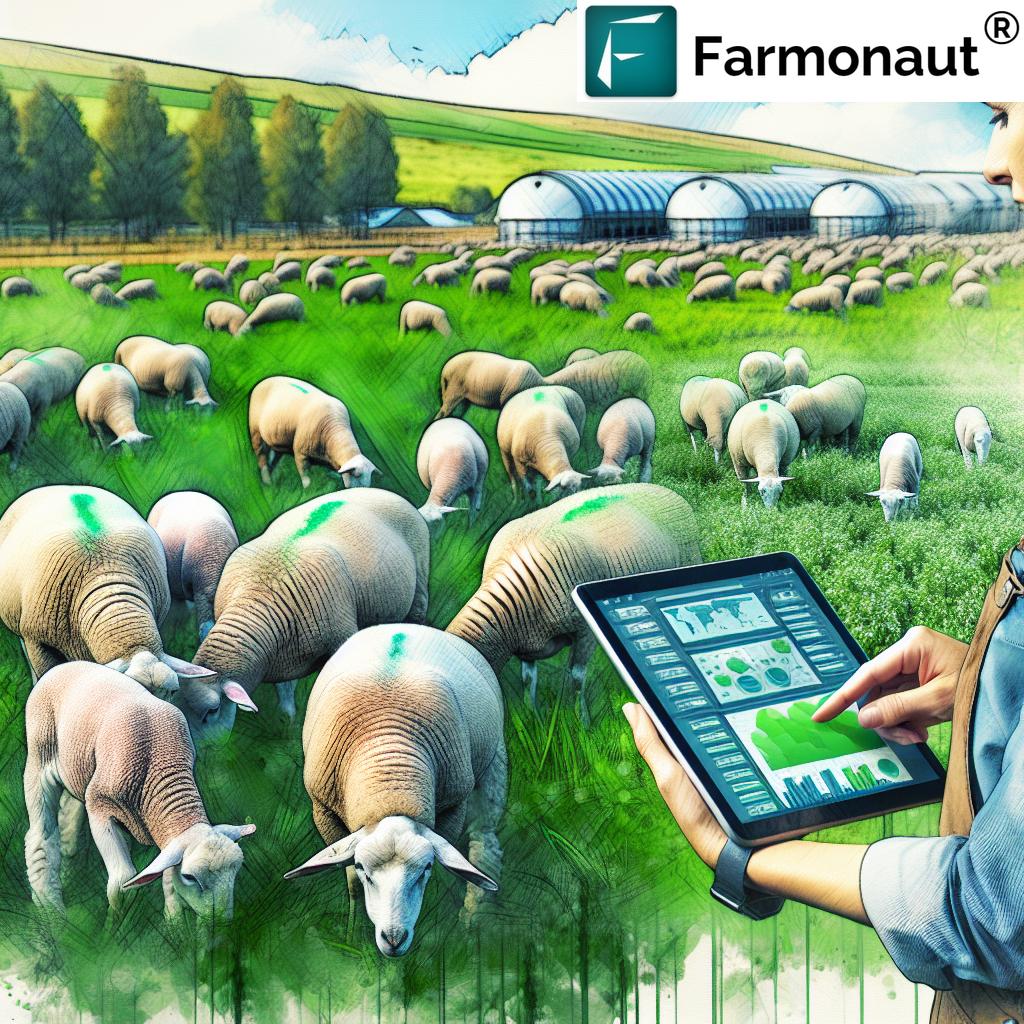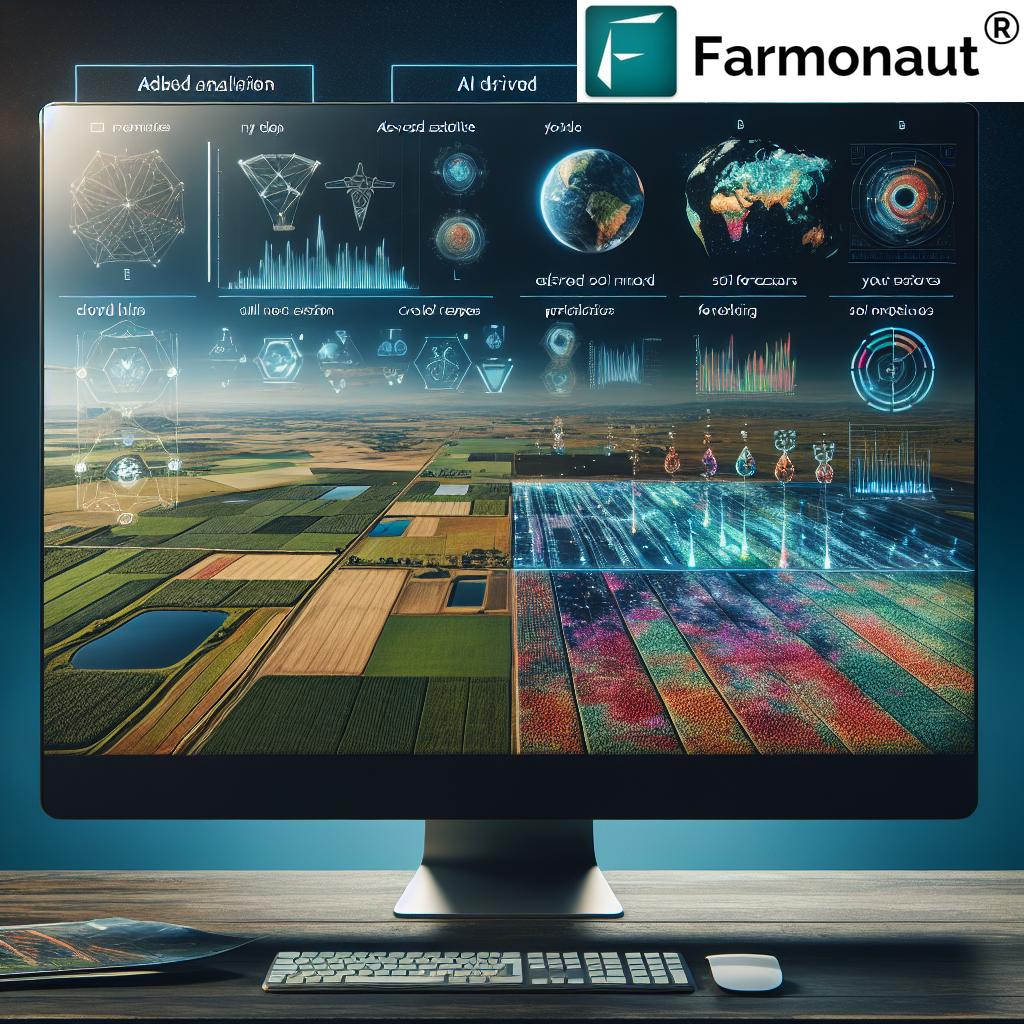Cloud Computing for Agriculture: 5 Smart Cloud Farming Uses in 2025
“By 2025, over 60% of large farms will use cloud-based platforms for real-time crop monitoring and management.”
“Cloud computing enables analysis of up to 1 million farm data points daily, optimizing resource use and boosting yields.”
Meta Description: Cloud computing for agriculture is revolutionizing farming in 2025 with smart, data-driven solutions, advanced platforms, and sustainable management in food production and forestry.
As we advance toward a more interconnected digital world, cloud computing for agriculture is transforming traditional farming and forestry. This paradigm shift in 2025 is redefining how farmers, foresters, and the broader agricultural sector harness resources, monitor crop health, and achieve precision management with smart, sustainable technologies.
From soil sensors to AI-driven advisory platforms, the application of cloud computing in agriculture is democratizing advanced technologies, enabling both smallholder and large-scale farmers to increase yields, reduce environmental impact, and respond rapidly to changing climate conditions.
Table of Contents
- Introduction: The Force of Cloud Computing in Agriculture
- What is Cloud Computing for Agriculture?
- What is Cloud Farming and Smart Cloud Farming?
- Benefits & Impact of Cloud Computing on Agriculture and Forestry
- 5 Smart Cloud Farming Uses in 2025
- 1. Precision Farming
- 2. Supply Chain Management
- 3. Weather Forecasting & Risk Management
- 4. Farm Management Software
- 5. Forestry Monitoring & Environmental Stewardship
- Comparison Table: 5 Smart Cloud Farming Uses
- Farmonaut: Making Smart Cloud Farming Accessible
- Technologies & Unique Benefits
- Business Model & App Access
- Farmonaut Product Links
- The Future of Cloud Computing in Agriculture (2025 & Beyond)
- FAQ: Cloud Computing for Agriculture & Smart Cloud Farming
- Farmonaut Subscription Options
- Conclusion: A Sustainable Future with Cloud Farming
Introduction: The Force of Cloud Computing in Agriculture
In recent years, cloud computing for agriculture has emerged as a transformative force, revolutionizing the way food is produced, monitored, and distributed—all in response to rising global challenges such as climate change, increased demand, and the urgent need for sustainable management of environmental resources.
By leveraging cloud, computing, and smart technologies, farms of all sizes have gained unprecedented access to real-time data, world-class analytics, and automated management tools. These advances, collectively described as smart cloud farming, enable actionable insights across all facets of the agricultural value chain—from the soil in a field to finished products reaching global markets.
As we approach 2025, the integration of cloud-based platforms and services is no longer a futuristic vision. Instead, it’s operational reality—reshaping food systems, forestry, and resource management, while minimizing wastage and bolstering sustainability.
What is Cloud Computing for Agriculture?
Cloud computing for agriculture refers to delivering on-demand computing resources—including storage, analytics, and processing power—over the internet from remote servers. In the farming context, cloud platforms enable agile management by connecting various data-generating devices—like IoT sensors, satellites, drones, and smart weather stations—to centralized systems for advanced processing,storage, and analysis.
Let’s break down how this works:
-
Data Collection:
- Smart sensors monitor soil moisture, temperature, and nutrient levels
- Drones and satellite imagery capture high-resolution crop health and field status images
- IoT devices relay machinery and environmental conditions in real-time
-
Data Transmission:
- All information is securely uploaded to remote servers (the ‘cloud’) via the internet
-
Data Processing & Advanced Analytics:
- Powerful cloud computing platforms process vast amounts of data, apply AI/machine learning algorithms, and generate recommendations for optimal farm management
-
Accessibility:
- Farmers, agronomists, and foresters can remotely access dashboards, insights, and historical records via any internet-enabled device
How Cloud Computing Powers Next-Gen Agriculture
- Centralized Data Hub: Aggregates information from multiple sources, providing a unified picture of all farm operations.
- Real-Time Decision Support: Processes live data (weather, crop health, pest activity) using AI and delivers actionable, timely recommendations.
- Scalable Insights: Facilitates big data analysis, helping farmers adapt to field-level variabilities and regional scale challenges.
- Remote Collaboration: Enables sharing and cross-analysis of data between farmers, researchers, and policymakers worldwide.
What is Cloud Farming and Smart Cloud Farming?
In simple terms, cloud farming refers to the digital management of farm activities by using cloud-based services across agriculture and forestry. It is an umbrella term covering all data-driven, remotely-managed systems that provide farmers and forest managers with tools for enhanced visibility, productivity, and resource control.
Smart cloud farming takes this further—integrating technologies such as IoT, data analytics, AI, and automation, all orchestrated via cloud infrastructure. Through this, tasks like irrigation, fertilization, and pest monitoring can be optimized or autonomously managed with minimal human intervention, saving time, labor, and reducing errors.
Key differentiators of smart cloud farming in 2025:
- Real-time, AI-based farm advisory tools using satellite and local sensor data
- Integrated dashboards that monitor and control all field equipment from a single cloud interface
- Automated irrigation and fertilization decisions driven by up-to-the-minute soil and climate analysis
- Seamless supply chain and traceability using blockchain plus cloud data integrations
- Remote diagnostics and predictive maintenance for agricultural machinery
Why Adopt Smart Cloud Farming?
- Reduces waste (water, fertilizer, fuel, labor)
- Increases yields and profitability via agile, informed decision making
- Promotes sustainable management by minimizing environmental impact
- Scales easily from small plots to thousands of hectares
- Enables full compliance and transparent reporting for government and market standards
Benefits & Impact of Cloud Computing in Agriculture and Forestry
The impact of cloud computing in agriculture and forestry extends well beyond simple operational improvements. Cloud-centric farming transforms the entire value chain—enabling more sustainable systems with optimized resource use, proactive environmental stewardship, and better adaptability to climate and market shifts.
Key Benefits of Cloud Agriculture
-
Democratizes Technology:
Smallholder and large farms can access the same advanced analytics, data, and remote monitoring tools via affordable subscription models. High initial IT infrastructure costs are eliminated. -
Data-Driven Decisions:
Continuous flow of real-time data (collected, analyzed, and processed via cloud) supports precision farming—providing context-specific recommendations for irrigation, fertigation, pest control, and harvesting time. -
Improves Productivity & Resource Efficiency:
Cloud solutions help reduce water use by up to 25%, fertilizer application by 15%, while potentially boosting crop yields by 10-30% through precise, informed management. -
Enables Sustainability:
Reduced chemical usage and improved field practices minimize runoff, improve soil health, and support carbon emission tracking and reduction—all essential for global food security and climate adaptation. -
Boosts Adaptability:
Cloud-based risk management tools analyze historical and real-time climate data, enabling forecasting and rapid response to extreme weather, pest threats, and market disruptions. -
Enhances Collaboration:
Facilitates knowledge sharing and real-time data exchange among farmers, foresters, agronomists, researchers, and regulatory authorities—speeding up technological diffusion and promoting continuous innovation.
“Cloud computing enables analysis of up to 1 million farm data points daily, optimizing resource use and boosting yields.”
5 Smart Cloud Farming Uses in 2025
Let’s explore the top five applications of cloud computing in agriculture—each redefining the sector’s future with real, measurable benefits.
1. Precision Farming: Data-Driven Resource Management
Precision farming harnesses cloud platforms to collect and process data from soil sensors, weather stations, and remote crop monitors. This delivers actionable crop-specific recommendations for irrigation, fertilization, and pest control, ensuring that resources are applied only where and when they are needed most.
- Cloud processing enables field-specific variable rate input applications (fertilizer/water/pesticide), reducing wastage and environmental impact.
- Data from multiple years and fields can be cross-analyzed in the cloud, supporting adaptive practices and rapid troubleshooting in future seasons.
2. Supply Chain Management: Transparency, Traceability & Food Safety
Supply chain management connects the journey from seed to shelf via cloud-based systems. By linking farmers, suppliers, and distributors, the cloud enables transparent tracking of produce, ensuring food safety and minimizing post-harvest losses.
- Blockchain and cloud platforms enhance traceability, allowing consumers and corporations to verify product origin and safety at each supply chain stage.
- Smart logistics algorithms optimize routes, storage, and delivery, reducing the risk of spoilage in transit and improving overall efficiency.
- Farmonaut Traceability uses blockchain and satellite integrations for product journey transparency—protecting against fraud and building consumer trust in global food systems.
3. Weather Forecasting and Risk Management: Proactive Adaptation
Advances in cloud-powered predictive models enable deep analysis of historic and real-time climate data. Accurate forecasting arms farmers with the knowledge to prepare for extreme conditions, pests, and risk scenarios—mitigating losses and enabling climate-smart decisions.
- Cloud links multi-source weather, field, and crop imagery to deliver precise, hyperlocal forecasts and alerts.
- Automated advisory systems push recommendations in real time (when to irrigate, apply pesticide, or harvest), directly lowering vulnerability to unexpected changes.
- Reliable weather insurance verification becomes possible thanks to cloud-based data records and Farmonaut’s crop loan and insurance API offerings (satellite-based verification for financial access and fair claims).
4. Farm Management Software: Smarter Operations from Any Device
Integrated farm management software built on cloud infrastructure allows seamless monitoring of all critical resources and operational aspects—crop growth, labor allocation, irrigation schedules, equipment status, and more. Cloud solutions enable remote access and control, freeing up time and driving data-based management.
- Farmers can track, record, and analyze every input and output (water, fertilizer, machine hours, harvests) without being on-site.
- Historical data, trends, and predictive models are accessible from smartphones, tablets, or desktops.
- Farmonaut Large Scale Farm Management System supports monitoring of multiple farms and plantations, optimizing operational costs and resource allocation for enterprises and cooperatives.
5. Forestry Monitoring and Environmental Stewardship
In the forestry sector, cloud services are powering the analysis of satellite imagery and drone-collected data to monitor forest health, detect illegal logging, assess biomass, and calculate carbon sequestration. This is vital for sustainability and regulatory compliance.
- Early-warning alerts for disease, deforestation, and encroachment are generated via AI–cloud integrations.
- Forest carbon footprint tracking and reporting are streamlined. Discover how Farmonaut’s Carbon Footprinting tool empowers environmental and climate initiatives with cloud-based monitoring and compliance.
- Managers remotely plan, track, and report on conservation projects, biomass inventory, and habitat interventions, ensuring long-term ecosystem integrity.
Comparison Table of 5 Smart Cloud Farming Uses
Farmonaut: Making Smart Cloud Farming Accessible
As a pioneering agricultural technology company, Farmonaut equips farmers and agribusinesses worldwide with advanced, cloud-based precision platforms designed for the realities of 2025 and beyond.
Technologies & Unique Benefits
We at Farmonaut leverage a blend of satellite imagery, AI, blockchain, and machine learning to empower agriculture and forestry with next-generation monitoring, analysis, and remote management:
-
Satellite-Based Crop Health Monitoring:
Using multispectral images, our app delivers real-time crop health, soil moisture, and stress detection for context-aware interventions that enhance farm productivity. -
Jeevn AI Advisory:
Our AI engine processes satellite, weather, and sensor data for highly tailored crop management advice—optimizing every farming decision and increasing operational efficiency. -
Blockchain Traceability:
We offer transparent, tamper-proof product traceability from farm to market, building trust and radically reducing fraud in food supply chains thanks to our Traceability Platform. -
Fleet & Resource Management:
With tools for fleet tracking and optimized equipment scheduling, we reduce operational costs (see our Fleet Management solution) and improve logistics efficiency for plantation owners and agribusinesses. -
Carbon Footprinting:
Our carbon monitoring system quantifies emissions, supporting compliance and sustainability for farms and forest stewards.
To support the full agricultural and forestry ecosystem, we provide mobile and web access, as well as robust developer APIs:
- Web App
- Android
- iOS
- Farmonaut API
Developers can integrate satellite/weather data into their digital platforms or use it in research for a wide range of cloud computing in agriculture applications.
Developer Documentation
Business Model & Access: Affordable, Scalable & Inclusive
Farmonaut’s flexible subscription model makes precision cloud farming affordable for individual farmers, cooperatives, agribusinesses, and government programs worldwide. Pricing scales by hectares covered and data update frequency—all managed from an intuitive dashboard with multi-device access.
Our solutions help increase field yields, reduce waste, and improve profits, particularly for small and medium-sized farmers who need cost-effective, easy-to-use technology.
Explore Large Scale Farm Management for enterprises and plantation management.
Product Links for Specific Use Cases
- Farmonaut Traceability: Product Traceability page – Trace food products from farm to fork, meeting food safety and buyer compliance requirements globally.
- Fleet Management: Fleet Management page – Optimize farm vehicle scheduling, reduce logistics costs, and boost operational transparency.
- Carbon Footprinting: Carbon Footprinting – Report emissions, drive sustainability, and comply with environmental certifications.
- Crop Loans & Insurance: Crop Loan & Insurance – Gain instant, satellite-verified field status for seamless financial access and credible claims.
- Forest Advisory Solutions: Crop, Plantation & Forest Advisory – Empower forest managers and plantation owners with AI-enabled, satellite-driven monitoring and resource optimization.
The Future of Cloud Computing in Agriculture (2025 & Beyond)
As we approach and move beyond 2025, the evolution of cloud computing for agriculture promises even greater transformations:
- 5G + Edge Computing: Real-time, high-bandwidth cloud connectivity will make live video, sensor, and drone data processing possible from the most remote rural locations—empowering farmers everywhere with the speed and reliability they need to optimize operations.
- AI-Driven Automation: Integration of AI with smart cloud systems will further automate irrigation, input delivery, disease detection, and more—allowing semi-autonomous and even autonomous farm management.
- Blockchain-Backed Traceability: Secure, transparent food supply chains, reducing fraud, and ensuring every step (from soil to market shelf) is visible to buyers and consumers alike.
- Climate Adaptation and Sustainability: Big data on climate, weather, and crop history will drive adaptive breeding, intelligent varietal recommendations, and real-time disaster response—improving resilience and supporting regulatory compliance at a global scale.
- Inclusion of Smallholders: Mobile-ready, affordable, multilingual cloud solutions like Farmonaut’s are making it possible for even the smallest farms to thrive in the new data-driven era.
With the continued integration of drones, satellites, smart sensors, and AI into cloud-centric agricultural platforms, farmers and foresters will be better equipped to feed the world, protect the environment, and address resource scarcity—creating a sustainable, resilient future for all.
FAQ: Cloud Computing for Agriculture & Smart Cloud Farming
-
What is the main advantage of using cloud computing in agriculture?
Cloud computing makes advanced analytics and real-time decision-making affordable and scalable for any farm size, enhancing yield, efficiency, and sustainability. -
How is data collected for cloud farming?
Data is collected via IoT sensors, weather stations, soil probes, drones, and satellite imagery—automatically uploaded to cloud platforms for storage and analysis. -
What is the difference between cloud farming and smart cloud farming?
Cloud farming digitizes farm management via the cloud. Smart cloud farming goes further, integrating AI, automation, and data analytics for autonomous resource management, predictive insights, and operational efficiency. -
Is cloud computing in agriculture secure?
Yes. Leading providers (like Farmonaut) use strong data encryption, secure servers, and blockchain for traceability, ensuring data and operational security. -
How does cloud computing reduce waste in agriculture?
By providing precise, targeted recommendations for irrigation, fertilization, and pest control, cloud systems reduce over-application and ensure inputs are used only as needed. -
What kinds of farms can benefit from cloud computing?
All types—crop farms, plantations, forestry operations, agribusinesses, even smallholder fields—can benefit thanks to scalable, flexible cloud platforms. -
Can I access Farmonaut from different devices?
Absolutely. Farmonaut offers web, Android, and iOS apps, so you can monitor and manage your farm remotely on any device.
Farmonaut Subscription Options
Conclusion: A Sustainable Future with Cloud Farming
Cloud computing in agriculture is not just a technological trend, but a cornerstone in delivering resilient, productive, and sustainable food and forestry systems for 2025 and beyond. By harnessing the full power of data, cloud platforms, AI, and remote monitoring, farmers and foresters are more capable than ever to meet the world’s food demands while promoting environmental stewardship and resource efficiency.
As the future unfolds, we at Farmonaut will continue pioneering accessible, affordable smart cloud farming solutions so that every stakeholder in agriculture and forestry can thrive in this new, sustainable era.
Ready to transform your farm with cloud-powered precision?
Start with Farmonaut Web & Mobile Apps or Integrate our satellite APIs for next-gen, smart cloud farming.












